Using batteries as a power source for vehicles is a great way to reduce environmental issues. You will also find such items easy to use.
Golf carts and electric cars running on the cells have become more and more prevalent for this sake.
We’ve covered everything you need to know about golf cart batteries and electric car batteries. Let’s read on to discover!
What Are Golf Carts Batteries?
These batteries are deep-cycle cells designed to withstand high current consumption and regular heavy degradation.
They are commonly available in 6, 8, and 12-volt formats. You can connect them in series to produce the required power.
How do they work?
The cells work by converting chemical power into electrical one.
Different types of batteries come with different chemical reactions, but for the most part, they are the same.
Standard lead-acid batteries run in a series, which means that power flows from the first to the final cell in your system before moving to the body of your cart.
Different types
Golf cart batteries are available in various kinds based on their energy requirements.
- Flooded lead-acid
Flooded lead-acid cells are one of the most prevalent forms. They offer many benefits in terms of durability and ease of use.
The cells have big separators, thick plates, and dense paste material. Often, they don’t have any seal and combine the gasses into liquids on the inside.
The electrolyte in such cells is free to move around inside the encasement. The acid works in sync with lead plates to store power when charged.
These items require frequent upkeep in the form of water refilling and will last longer with appropriate maintenance.
- AGM
AGM (Absorbed Glass Mat) batteries are different from normal flooded cells in that they have a fiberglass divider that holds the electrolyte securely and absorbs the battery acid.
AGMs have a low internal impedance and can provide strong currents when necessary and a long lifetime, even when thoroughly cycled.
Unlike typical lead-acid packs, which enable the electrolytes to freely flood, AGMs feature fiberglass mats that keep this problem from happening.
When performing the same duty, AGMs have a longer lifespan. Moreover, they can charge five times faster than lead-acid cells.
The AGM batteries first aimed to serve military aircraft. As a result, they have a solid design that combines power, safety, durability, and weight.
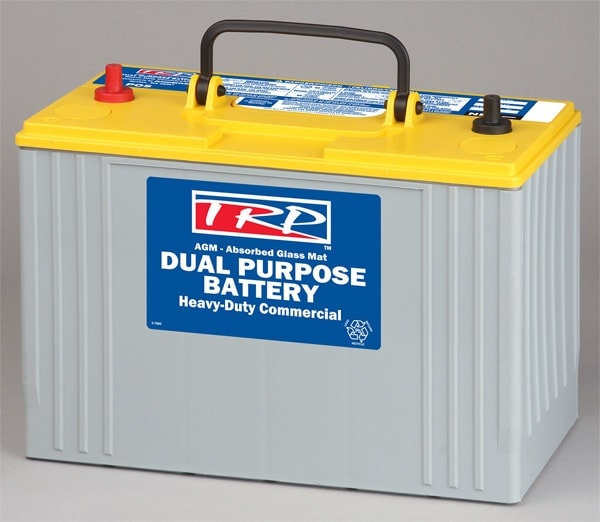
AGMs have a long lifespan
- Gel
Gel batteries are quite similar to AGMs, but they feature a thick paste to replace the fiberglass mat. Besides, AGMs can sustain higher charges.
The gel battery contains a silica gel that allows electricity to move between plates while protecting the cell from leaking if the casing breaks down.
Because the batteries have gel instead of liquids, they need very little maintenance to keep them in good working order.
The gel also helps prevent the electrolytes from draining in hot weather or freezing in cold weather. Hence, it can work well in extreme weather.
- Lithium-ion
In recent years, lithium-ion battery has gained a lot of popularity. It’s a cutting-edge technology that relies almost entirely on lithium-ion for its electrochemistry.
The lifespan of these products is well known. They have been the standard rechargeable battery for two decades due to their ability to withstand 5,000 charge cycles.
Lithium-ion batteries, unlike lead-acid ones, do not require watering, saving maintenance costs.

You can choose between four types of cells for your golf carts
Related:
What Are Electric Car Batteries?
In electric vehicles (EVs), the battery is the main power storage system. Depending on whether the car is AEV (all-electric) or PHEV (plug-in hybrid electric), the type of battery differs.
How do they work?
An electrically powered engine replaces the internal combustion engine found in gasoline-powered cars.
The electricity required by the engine to run the vehicle’s wheels is in a traction cell pack (typically a lithium-ion pack) in AEVs.
The cell pack is the component of the car that you need to plug in and recharge. Its efficiency plays a role in determining the car’s overall range.
Different types
There are four main types of products, and you’d better choose after considering your vehicle type and other features.
- Lithium-ion
Lithium-ion batteries are the most popular form of battery in electric vehicles. Most mobile electronics, such as computers and cell phones, use these ones.
The cells offer great high-temperature performance, a good power-to-weight ratio, and high power efficiency.
For their size, the batteries pack a lot of energy. The lightweight and compact size reduces the vehicle’s weight, helping it travel longer after one single charge.
The self-discharge rate is low. Hence, these cells can keep their ability to maintain their full charge for long periods.
The majority of lithium-ion cell parts are recyclable. They should be your choice if you need an environmentally friendly solution.
This battery can work for both PHEVs and AEVs, albeit its chemistry differs from that of consumer electronics cells.
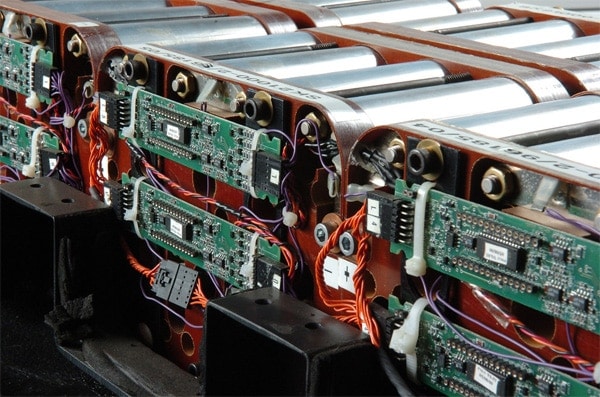
Lithium-ion is a popular choice
- Nickel-metal hydride
Nickel-metal hydride cells are popular in hybrid vehicles, but you can also find them in all-electric vehicles.
Hybrid-electric cars do not get their electricity from a plug-in supply but rely on petrol to produce power. Hence they aren’t really electric cars.
The life cycle of nickel-metal hydride cells is longer than that of lithium-ion and lead-acid ones. They are also invulnerable to mistreatment.
The batteries’ greatest drawbacks are their expensive cost, high self-discharge speed, and heat.
Because of these problems, the cells often work for hybrid electric vehicles rather than rechargeable electric ones.
- Lead-acid
We now only use lead-acid cells to support other battery workloads in electric cars. Although they are powerful, affordable, safe, and dependable, their short lifetime and low cold-temperature efficiency make them problematic.
High-capacity lead-acid batteries are improving. Yet, they still work as secondary power storage.
- Ultracapacitors
In the conventional sense, ultracapacitors are not really batteries. Instead, they use electrodes and an electrolyte to keep polarized fluids.
Because ultracapacitors assist electrochemical cells in leveling their load, they are secondary storage devices.
Ultracapacitors can also offer additional electricity to electric cars during regenerative braking and acceleration.
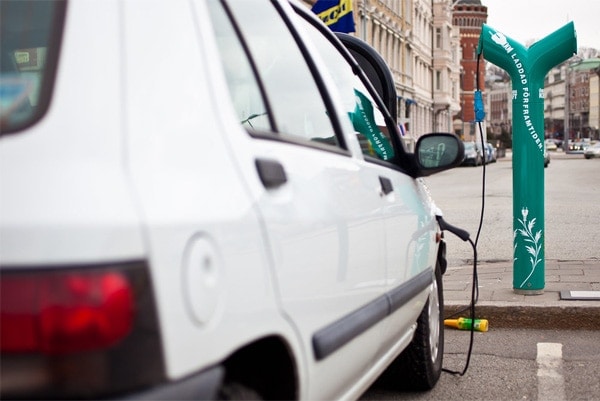
There are four choices to run your EV
Are All Batteries The Same?
No. They differ a lot in cost, power density, operating temperatures, charging speeds, and lifespan. Consider all the factors before getting the right one for your vehicle.
Cost
Lithium-ion technology is the most common choice for most golf carts and electric car batteries.
While lithium-ion batteries have become more affordable, electric vehicle batteries remain expensive.
However, emerging battery chemistries like lithium iron phosphate, which uses less costly raw resources, may eventually change that.
Energy density
EV batteries now have considerably longer distances, and charging stations are now nearly universal.
Further range expansion will necessitate more energy-dense cells, which rely on the cell as a main structural element, allowing for weight reduction.
Operating temperatures
One of the major disadvantages of electric vehicles over gasoline or diesel vehicles is their range, recharging rate, and lifespan. The ambient temperatures play a vital role in this case.
Cold temperatures will reduce the range noticeably, so you’ll need to pre-warm the charger to get the best charging speeds. Hot temperatures, on the other hand, are harmful to battery life.
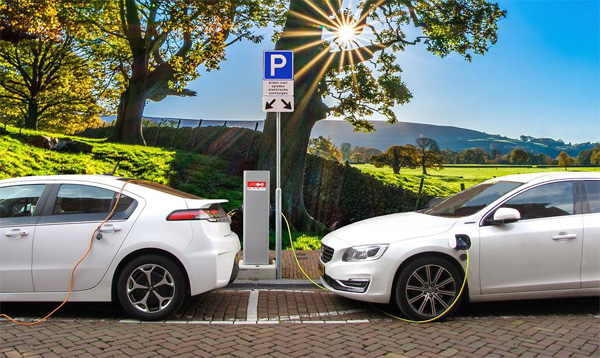
Temperature can affect the overall performance of the system
Charging speeds
You surely want your vehicle charged quickly for your next use. As the charging speed is different from cell to cell, you can choose the fastest one to optimize your charging time.
However, please note that some products allow you to charge quickly but release a lot of heat. It may soon degrade your vehicle.
Lifespan
The battery lifespan varies depending on many factors, such as material, brand, maintenance, number of recharges, and frequency of use.
Differences Between Golf Carts Batteries And Electric Car Batteries
It’s hard to determine the differences between the two power sources on these vehicles because they use different types of batteries.
As we have discussed, both golf carts and electric carts may employ lithium-ion and lead-acid cells to run. Hence, they share a lot of things in common.
While lithium-ion cells work nearly the same on both vehicles, we can point out slight differences in the lead-acid packs.

How do the two technologies differ?
Power
Engineers assess a car battery’s power in “Cold Cranking Amps,” which measures how much electricity a fully charged battery can generate.
They usually take a 30-second measurement of the current. To pass the test, the battery must retain a value of 7.2 volts at -18°C.
On the other hand, Reserve Capacity is a measurement for golf cart batteries. Engineers measure a battery’s ability to deliver 25 amps at 80°F while maintaining a voltage output of 1.75 volts per cell in minutes.
The result is that the golf cart battery may only provide half of the CCA of a car battery.
Maintenance
You can use the golf cart battery until all of the electricity has been used up. You only need to connect it to a power supply to recharge it.
A typical automotive battery only runs out of power the battery by 1 to 3% every time you use it.
Then, recharge it using the car’s alternator. In fact, it’ll never drop more than 20% of its power during its lifetime.
It’s advisable not to charge this type of cell manually often, or you will end up with a damaged pack.
Are These Batteries Interchangeable?
Because they share the same elements, users can interchange them technically. However, it’s not advisable to do so.
The standard car battery can only work for a limited period. It would be best not to use its metal plates repeatedly. In fact, at such great force, they may bend in a short period.
Golf cart batteries can run for longer and more frequent use. Users frequently use them to the point of exhaustion.
Is there any battery that can work for both purposes? Yes. Manufacturers have developed a dual-purpose product to support short-term power bursts and higher power performance.
However, just because a manufacturer’s technology is done does not indicate that electric car and golf cart batteries are no longer available.
The two battery kinds’ physical designs are too different. It is very hard to create a single design that fits well in both systems.
The ultimate advice is to purchase the right one for your vehicle. This way, you’ll get a battery that will give you the power supply you need.
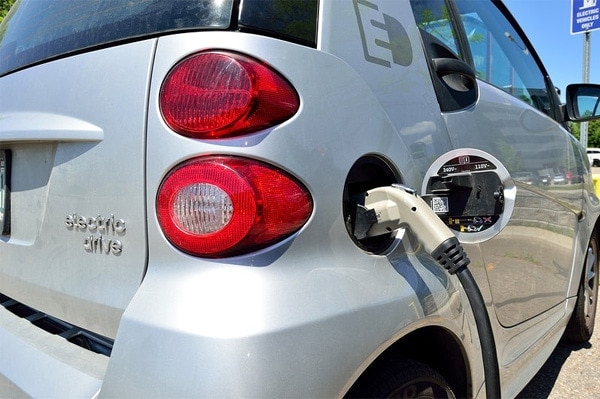
Choose the right product for your vehicle
Frequently Asked Questions
So you have comprehensive knowledge about the two types of batteries. The following answers and questions will give you more information.
1. How to test golf cart batteries?
The voltmeter will display a reading if you check the battery with the motor powered off.
Connect the negative and positive tips of the meter to the battery’s ground.
On a voltmeter, healthy cells should measure about 50 to 52 volts. Most packs have a voltage of around 48 volts.
Please note that a high number does not always imply that the devices are in good condition.
In general, starting with the voltmeter is a smart idea. It’s better to upgrade the cells if they show less than 48 volts.
You can learn more methods for testing the products right here:
2. What are the best batteries for electric cars?
Many people consider lithium-ion to be the best, and it has recently become the most popular option.
The good news for electric vehicle owners is that their batteries come with a warranty for at least eight years or 100,000 miles.
3. How long do golf cart batteries last on one charge?
An electric golf cart can usually run for 45 to 90 minutes at max power on a full battery charger.
The run time depends on the battery’s age, with newer cells having better run times.
Final Words
Golf carts and electric cars can run smoothly and effectively thanks to the battery technology you choose.
Please note that not all of the cells are the same. It would be best to consider certain factors to opt for the best one.
Hopefully, you will find this article helpful. If you have any questions, please feel free to ask. Thank you for reading!
WHAT'S NEW
The best AGM battery chargers will be the ideal option to revive your flat battery without relying on professional help. These handy high-tech chargers are extremely beneficial because they offer...
The Genius Boost GB40 is popular because of its ability to help boost your vehicle when it has battery issues. Many of our customers wonder why the Noco GB40 can work greatly like so. So, we have...

